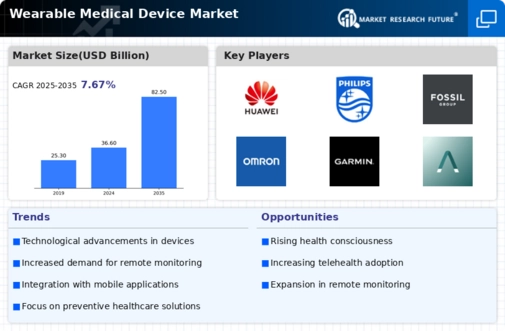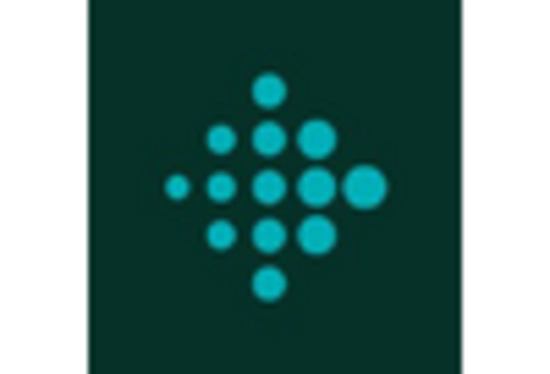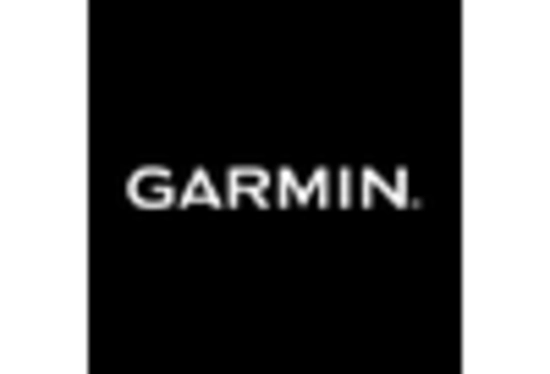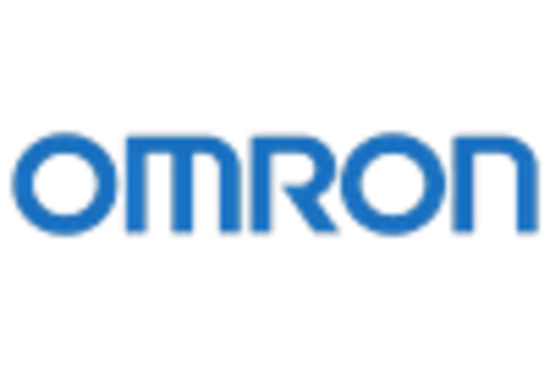Fitness Trackers
Smartwatches
Medical Monitors
Wearable ECG Monitors
Wearable Blood Pressure Monitors
Biosensors
Microcontrollers
Flexible display
Wireless Communication
Power Management
Chronic Diseases Management
Fitness Wellness
Elderly Care
Remote Patient Monitoring
Health Analytics
Hospitals
Home Healthcare
Ambulatory Surgical Centers
Fitness Centers
Individual Consumers
North America
Europe
South America
Asia Pacific
Middle East and Africa
North America Outlook (USD Billion, 2019-2035)
North America Wearable Medical Device Market by Device Type
Fitness Trackers
Smartwatches
Medical Monitors
Wearable ECG Monitors
Wearable Blood Pressure Monitors
North America Wearable Medical Device Market by Technology Type
Biosensors
Microcontrollers
Flexible display
Wireless Communication
Power Management
North America Wearable Medical Device Market by Application Type
Chronic Diseases Management
Fitness Wellness
Elderly Care
Remote Patient Monitoring
Health Analytics
North America Wearable Medical Device Market by End User Type
Hospitals
Home Healthcare
Ambulatory Surgical Centers
Fitness Centers
Individual Consumers
North America Wearable Medical Device Market by Regional Type
US
Canada
US Outlook (USD Billion, 2019-2035)
US Wearable Medical Device Market by Device Type
Fitness Trackers
Smartwatches
Medical Monitors
Wearable ECG Monitors
Wearable Blood Pressure Monitors
US Wearable Medical Device Market by Technology Type
Biosensors
Microcontrollers
Flexible display
Wireless Communication
Power Management
US Wearable Medical Device Market by Application Type
Chronic Diseases Management
Fitness Wellness
Elderly Care
Remote Patient Monitoring
Health Analytics
US Wearable Medical Device Market by End User Type
Hospitals
Home Healthcare
Ambulatory Surgical Centers
Fitness Centers
Individual Consumers
CANADA Outlook (USD Billion, 2019-2035)
CANADA Wearable Medical Device Market by Device Type
Fitness Trackers
Smartwatches
Medical Monitors
Wearable ECG Monitors
Wearable Blood Pressure Monitors
CANADA Wearable Medical Device Market by Technology Type
Biosensors
Microcontrollers
Flexible display
Wireless Communication
Power Management
CANADA Wearable Medical Device Market by Application Type
Chronic Diseases Management
Fitness Wellness
Elderly Care
Remote Patient Monitoring
Health Analytics
CANADA Wearable Medical Device Market by End User Type
Hospitals
Home Healthcare
Ambulatory Surgical Centers
Fitness Centers
Individual Consumers
Europe Outlook (USD Billion, 2019-2035)
Europe Wearable Medical Device Market by Device Type
Fitness Trackers
Smartwatches
Medical Monitors
Wearable ECG Monitors
Wearable Blood Pressure Monitors
Europe Wearable Medical Device Market by Technology Type
Biosensors
Microcontrollers
Flexible display
Wireless Communication
Power Management
Europe Wearable Medical Device Market by Application Type
Chronic Diseases Management
Fitness Wellness
Elderly Care
Remote Patient Monitoring
Health Analytics
Europe Wearable Medical Device Market by End User Type
Hospitals
Home Healthcare
Ambulatory Surgical Centers
Fitness Centers
Individual Consumers
Europe Wearable Medical Device Market by Regional Type
Germany
UK
France
Russia
Italy
Spain
Rest of Europe
GERMANY Outlook (USD Billion, 2019-2035)
GERMANY Wearable Medical Device Market by Device Type
Fitness Trackers
Smartwatches
Medical Monitors
Wearable ECG Monitors
Wearable Blood Pressure Monitors
GERMANY Wearable Medical Device Market by Technology Type
Biosensors
Microcontrollers
Flexible display
Wireless Communication
Power Management
GERMANY Wearable Medical Device Market by Application Type
Chronic Diseases Management
Fitness Wellness
Elderly Care
Remote Patient Monitoring
Health Analytics
GERMANY Wearable Medical Device Market by End User Type
Hospitals
Home Healthcare
Ambulatory Surgical Centers
Fitness Centers
Individual Consumers
UK Outlook (USD Billion, 2019-2035)
UK Wearable Medical Device Market by Device Type
Fitness Trackers
Smartwatches
Medical Monitors
Wearable ECG Monitors
Wearable Blood Pressure Monitors
UK Wearable Medical Device Market by Technology Type
Biosensors
Microcontrollers
Flexible display
Wireless Communication
Power Management
UK Wearable Medical Device Market by Application Type
Chronic Diseases Management
Fitness Wellness
Elderly Care
Remote Patient Monitoring
Health Analytics
UK Wearable Medical Device Market by End User Type
Hospitals
Home Healthcare
Ambulatory Surgical Centers
Fitness Centers
Individual Consumers
FRANCE Outlook (USD Billion, 2019-2035)
FRANCE Wearable Medical Device Market by Device Type
Fitness Trackers
Smartwatches
Medical Monitors
Wearable ECG Monitors
Wearable Blood Pressure Monitors
FRANCE Wearable Medical Device Market by Technology Type
Biosensors
Microcontrollers
Flexible display
Wireless Communication
Power Management
FRANCE Wearable Medical Device Market by Application Type
Chronic Diseases Management
Fitness Wellness
Elderly Care
Remote Patient Monitoring
Health Analytics
FRANCE Wearable Medical Device Market by End User Type
Hospitals
Home Healthcare
Ambulatory Surgical Centers
Fitness Centers
Individual Consumers
RUSSIA Outlook (USD Billion, 2019-2035)
RUSSIA Wearable Medical Device Market by Device Type
Fitness Trackers
Smartwatches
Medical Monitors
Wearable ECG Monitors
Wearable Blood Pressure Monitors
RUSSIA Wearable Medical Device Market by Technology Type
Biosensors
Microcontrollers
Flexible display
Wireless Communication
Power Management
RUSSIA Wearable Medical Device Market by Application Type
Chronic Diseases Management
Fitness Wellness
Elderly Care
Remote Patient Monitoring
Health Analytics
RUSSIA Wearable Medical Device Market by End User Type
Hospitals
Home Healthcare
Ambulatory Surgical Centers
Fitness Centers
Individual Consumers
ITALY Outlook (USD Billion, 2019-2035)
ITALY Wearable Medical Device Market by Device Type
Fitness Trackers
Smartwatches
Medical Monitors
Wearable ECG Monitors
Wearable Blood Pressure Monitors
ITALY Wearable Medical Device Market by Technology Type
Biosensors
Microcontrollers
Flexible display
Wireless Communication
Power Management
ITALY Wearable Medical Device Market by Application Type
Chronic Diseases Management
Fitness Wellness
Elderly Care
Remote Patient Monitoring
Health Analytics
ITALY Wearable Medical Device Market by End User Type
Hospitals
Home Healthcare
Ambulatory Surgical Centers
Fitness Centers
Individual Consumers
SPAIN Outlook (USD Billion, 2019-2035)
SPAIN Wearable Medical Device Market by Device Type
Fitness Trackers
Smartwatches
Medical Monitors
Wearable ECG Monitors
Wearable Blood Pressure Monitors
SPAIN Wearable Medical Device Market by Technology Type
Biosensors
Microcontrollers
Flexible display
Wireless Communication
Power Management
SPAIN Wearable Medical Device Market by Application Type
Chronic Diseases Management
Fitness Wellness
Elderly Care
Remote Patient Monitoring
Health Analytics
SPAIN Wearable Medical Device Market by End User Type
Hospitals
Home Healthcare
Ambulatory Surgical Centers
Fitness Centers
Individual Consumers
REST OF EUROPE Outlook (USD Billion, 2019-2035)
REST OF EUROPE Wearable Medical Device Market by Device Type
Fitness Trackers
Smartwatches
Medical Monitors
Wearable ECG Monitors
Wearable Blood Pressure Monitors
REST OF EUROPE Wearable Medical Device Market by Technology Type
Biosensors
Microcontrollers
Flexible display
Wireless Communication
Power Management
REST OF EUROPE Wearable Medical Device Market by Application Type
Chronic Diseases Management
Fitness Wellness
Elderly Care
Remote Patient Monitoring
Health Analytics
REST OF EUROPE Wearable Medical Device Market by End User Type
Hospitals
Home Healthcare
Ambulatory Surgical Centers
Fitness Centers
Individual Consumers
APAC Outlook (USD Billion, 2019-2035)
APAC Wearable Medical Device Market by Device Type
Fitness Trackers
Smartwatches
Medical Monitors
Wearable ECG Monitors
Wearable Blood Pressure Monitors
APAC Wearable Medical Device Market by Technology Type
Biosensors
Microcontrollers
Flexible display
Wireless Communication
Power Management
APAC Wearable Medical Device Market by Application Type
Chronic Diseases Management
Fitness Wellness
Elderly Care
Remote Patient Monitoring
Health Analytics
APAC Wearable Medical Device Market by End User Type
Hospitals
Home Healthcare
Ambulatory Surgical Centers
Fitness Centers
Individual Consumers
APAC Wearable Medical Device Market by Regional Type
China
India
Japan
South Korea
Malaysia
Thailand
Indonesia
Rest of APAC
CHINA Outlook (USD Billion, 2019-2035)
CHINA Wearable Medical Device Market by Device Type
Fitness Trackers
Smartwatches
Medical Monitors
Wearable ECG Monitors
Wearable Blood Pressure Monitors
CHINA Wearable Medical Device Market by Technology Type
Biosensors
Microcontrollers
Flexible display
Wireless Communication
Power Management
CHINA Wearable Medical Device Market by Application Type
Chronic Diseases Management
Fitness Wellness
Elderly Care
Remote Patient Monitoring
Health Analytics
CHINA Wearable Medical Device Market by End User Type
Hospitals
Home Healthcare
Ambulatory Surgical Centers
Fitness Centers
Individual Consumers
INDIA Outlook (USD Billion, 2019-2035)
INDIA Wearable Medical Device Market by Device Type
Fitness Trackers
Smartwatches
Medical Monitors
Wearable ECG Monitors
Wearable Blood Pressure Monitors
INDIA Wearable Medical Device Market by Technology Type
Biosensors
Microcontrollers
Flexible display
Wireless Communication
Power Management
INDIA Wearable Medical Device Market by Application Type
Chronic Diseases Management
Fitness Wellness
Elderly Care
Remote Patient Monitoring
Health Analytics
INDIA Wearable Medical Device Market by End User Type
Hospitals
Home Healthcare
Ambulatory Surgical Centers
Fitness Centers
Individual Consumers
JAPAN Outlook (USD Billion, 2019-2035)
JAPAN Wearable Medical Device Market by Device Type
Fitness Trackers
Smartwatches
Medical Monitors
Wearable ECG Monitors
Wearable Blood Pressure Monitors
JAPAN Wearable Medical Device Market by Technology Type
Biosensors
Microcontrollers
Flexible display
Wireless Communication
Power Management
JAPAN Wearable Medical Device Market by Application Type
Chronic Diseases Management
Fitness Wellness
Elderly Care
Remote Patient Monitoring
Health Analytics
JAPAN Wearable Medical Device Market by End User Type
Hospitals
Home Healthcare
Ambulatory Surgical Centers
Fitness Centers
Individual Consumers
SOUTH KOREA Outlook (USD Billion, 2019-2035)
SOUTH KOREA Wearable Medical Device Market by Device Type
Fitness Trackers
Smartwatches
Medical Monitors
Wearable ECG Monitors
Wearable Blood Pressure Monitors
SOUTH KOREA Wearable Medical Device Market by Technology Type
Biosensors
Microcontrollers
Flexible display
Wireless Communication
Power Management
SOUTH KOREA Wearable Medical Device Market by Application Type
Chronic Diseases Management
Fitness Wellness
Elderly Care
Remote Patient Monitoring
Health Analytics
SOUTH KOREA Wearable Medical Device Market by End User Type
Hospitals
Home Healthcare
Ambulatory Surgical Centers
Fitness Centers
Individual Consumers
MALAYSIA Outlook (USD Billion, 2019-2035)
MALAYSIA Wearable Medical Device Market by Device Type
Fitness Trackers
Smartwatches
Medical Monitors
Wearable ECG Monitors
Wearable Blood Pressure Monitors
MALAYSIA Wearable Medical Device Market by Technology Type
Biosensors
Microcontrollers
Flexible display
Wireless Communication
Power Management
MALAYSIA Wearable Medical Device Market by Application Type
Chronic Diseases Management
Fitness Wellness
Elderly Care
Remote Patient Monitoring
Health Analytics
MALAYSIA Wearable Medical Device Market by End User Type
Hospitals
Home Healthcare
Ambulatory Surgical Centers
Fitness Centers
Individual Consumers
THAILAND Outlook (USD Billion, 2019-2035)
THAILAND Wearable Medical Device Market by Device Type
Fitness Trackers
Smartwatches
Medical Monitors
Wearable ECG Monitors
Wearable Blood Pressure Monitors
THAILAND Wearable Medical Device Market by Technology Type
Biosensors
Microcontrollers
Flexible display
Wireless Communication
Power Management
THAILAND Wearable Medical Device Market by Application Type
Chronic Diseases Management
Fitness Wellness
Elderly Care
Remote Patient Monitoring
Health Analytics
THAILAND Wearable Medical Device Market by End User Type
Hospitals
Home Healthcare
Ambulatory Surgical Centers
Fitness Centers
Individual Consumers
INDONESIA Outlook (USD Billion, 2019-2035)
INDONESIA Wearable Medical Device Market by Device Type
Fitness Trackers
Smartwatches
Medical Monitors
Wearable ECG Monitors
Wearable Blood Pressure Monitors
INDONESIA Wearable Medical Device Market by Technology Type
Biosensors
Microcontrollers
Flexible display
Wireless Communication
Power Management
INDONESIA Wearable Medical Device Market by Application Type
Chronic Diseases Management
Fitness Wellness
Elderly Care
Remote Patient Monitoring
Health Analytics
INDONESIA Wearable Medical Device Market by End User Type
Hospitals
Home Healthcare
Ambulatory Surgical Centers
Fitness Centers
Individual Consumers
REST OF APAC Outlook (USD Billion, 2019-2035)
REST OF APAC Wearable Medical Device Market by Device Type
Fitness Trackers
Smartwatches
Medical Monitors
Wearable ECG Monitors
Wearable Blood Pressure Monitors
REST OF APAC Wearable Medical Device Market by Technology Type
Biosensors
Microcontrollers
Flexible display
Wireless Communication
Power Management
REST OF APAC Wearable Medical Device Market by Application Type
Chronic Diseases Management
Fitness Wellness
Elderly Care
Remote Patient Monitoring
Health Analytics
REST OF APAC Wearable Medical Device Market by End User Type
Hospitals
Home Healthcare
Ambulatory Surgical Centers
Fitness Centers
Individual Consumers
South America Outlook (USD Billion, 2019-2035)
South America Wearable Medical Device Market by Device Type
Fitness Trackers
Smartwatches
Medical Monitors
Wearable ECG Monitors
Wearable Blood Pressure Monitors
South America Wearable Medical Device Market by Technology Type
Biosensors
Microcontrollers
Flexible display
Wireless Communication
Power Management
South America Wearable Medical Device Market by Application Type
Chronic Diseases Management
Fitness Wellness
Elderly Care
Remote Patient Monitoring
Health Analytics
South America Wearable Medical Device Market by End User Type
Hospitals
Home Healthcare
Ambulatory Surgical Centers
Fitness Centers
Individual Consumers
South America Wearable Medical Device Market by Regional Type
Brazil
Mexico
Argentina
Rest of South America
BRAZIL Outlook (USD Billion, 2019-2035)
BRAZIL Wearable Medical Device Market by Device Type
Fitness Trackers
Smartwatches
Medical Monitors
Wearable ECG Monitors
Wearable Blood Pressure Monitors
BRAZIL Wearable Medical Device Market by Technology Type
Biosensors
Microcontrollers
Flexible display
Wireless Communication
Power Management
BRAZIL Wearable Medical Device Market by Application Type
Chronic Diseases Management
Fitness Wellness
Elderly Care
Remote Patient Monitoring
Health Analytics
BRAZIL Wearable Medical Device Market by End User Type
Hospitals
Home Healthcare
Ambulatory Surgical Centers
Fitness Centers
Individual Consumers
MEXICO Outlook (USD Billion, 2019-2035)
MEXICO Wearable Medical Device Market by Device Type
Fitness Trackers
Smartwatches
Medical Monitors
Wearable ECG Monitors
Wearable Blood Pressure Monitors
MEXICO Wearable Medical Device Market by Technology Type
Biosensors
Microcontrollers
Flexible display
Wireless Communication
Power Management
MEXICO Wearable Medical Device Market by Application Type
Chronic Diseases Management
Fitness Wellness
Elderly Care
Remote Patient Monitoring
Health Analytics
MEXICO Wearable Medical Device Market by End User Type
Hospitals
Home Healthcare
Ambulatory Surgical Centers
Fitness Centers
Individual Consumers
ARGENTINA Outlook (USD Billion, 2019-2035)
ARGENTINA Wearable Medical Device Market by Device Type
Fitness Trackers
Smartwatches
Medical Monitors
Wearable ECG Monitors
Wearable Blood Pressure Monitors
ARGENTINA Wearable Medical Device Market by Technology Type
Biosensors
Microcontrollers
Flexible display
Wireless Communication
Power Management
ARGENTINA Wearable Medical Device Market by Application Type
Chronic Diseases Management
Fitness Wellness
Elderly Care
Remote Patient Monitoring
Health Analytics
ARGENTINA Wearable Medical Device Market by End User Type
Hospitals
Home Healthcare
Ambulatory Surgical Centers
Fitness Centers
Individual Consumers
REST OF SOUTH AMERICA Outlook (USD Billion, 2019-2035)
REST OF SOUTH AMERICA Wearable Medical Device Market by Device Type
Fitness Trackers
Smartwatches
Medical Monitors
Wearable ECG Monitors
Wearable Blood Pressure Monitors
REST OF SOUTH AMERICA Wearable Medical Device Market by Technology Type
Biosensors
Microcontrollers
Flexible display
Wireless Communication
Power Management
REST OF SOUTH AMERICA Wearable Medical Device Market by Application Type
Chronic Diseases Management
Fitness Wellness
Elderly Care
Remote Patient Monitoring
Health Analytics
REST OF SOUTH AMERICA Wearable Medical Device Market by End User Type
Hospitals
Home Healthcare
Ambulatory Surgical Centers
Fitness Centers
Individual Consumers
MEA Outlook (USD Billion, 2019-2035)
MEA Wearable Medical Device Market by Device Type
Fitness Trackers
Smartwatches
Medical Monitors
Wearable ECG Monitors
Wearable Blood Pressure Monitors
MEA Wearable Medical Device Market by Technology Type
Biosensors
Microcontrollers
Flexible display
Wireless Communication
Power Management
MEA Wearable Medical Device Market by Application Type
Chronic Diseases Management
Fitness Wellness
Elderly Care
Remote Patient Monitoring
Health Analytics
MEA Wearable Medical Device Market by End User Type
Hospitals
Home Healthcare
Ambulatory Surgical Centers
Fitness Centers
Individual Consumers
MEA Wearable Medical Device Market by Regional Type
GCC Countries
South Africa
Rest of MEA
GCC COUNTRIES Outlook (USD Billion, 2019-2035)
GCC COUNTRIES Wearable Medical Device Market by Device Type
Fitness Trackers
Smartwatches
Medical Monitors
Wearable ECG Monitors
Wearable Blood Pressure Monitors
GCC COUNTRIES Wearable Medical Device Market by Technology Type
Biosensors
Microcontrollers
Flexible display
Wireless Communication
Power Management
GCC COUNTRIES Wearable Medical Device Market by Application Type
Chronic Diseases Management
Fitness Wellness
Elderly Care
Remote Patient Monitoring
Health Analytics
GCC COUNTRIES Wearable Medical Device Market by End User Type
Hospitals
Home Healthcare
Ambulatory Surgical Centers
Fitness Centers
Individual Consumers
SOUTH AFRICA Outlook (USD Billion, 2019-2035)
SOUTH AFRICA Wearable Medical Device Market by Device Type
Fitness Trackers
Smartwatches
Medical Monitors
Wearable ECG Monitors
Wearable Blood Pressure Monitors
SOUTH AFRICA Wearable Medical Device Market by Technology Type
Biosensors
Microcontrollers
Flexible display
Wireless Communication
Power Management
SOUTH AFRICA Wearable Medical Device Market by Application Type
Chronic Diseases Management
Fitness Wellness
Elderly Care
Remote Patient Monitoring
Health Analytics
SOUTH AFRICA Wearable Medical Device Market by End User Type
Hospitals
Home Healthcare
Ambulatory Surgical Centers
Fitness Centers
Individual Consumers
REST OF MEA Outlook (USD Billion, 2019-2035)
REST OF MEA Wearable Medical Device Market by Device Type
Fitness Trackers
Smartwatches
Medical Monitors
Wearable ECG Monitors
Wearable Blood Pressure Monitors
REST OF MEA Wearable Medical Device Market by Technology Type
Biosensors
Microcontrollers
Flexible display
Wireless Communication
Power Management
REST OF MEA Wearable Medical Device Market by Application Type
Chronic Diseases Management
Fitness Wellness
Elderly Care
Remote Patient Monitoring
Health Analytics
REST OF MEA Wearable Medical Device Market by End User Type
Hospitals
Home Healthcare
Ambulatory Surgical Centers
Fitness Centers
Individual Consumers









Leave a Comment